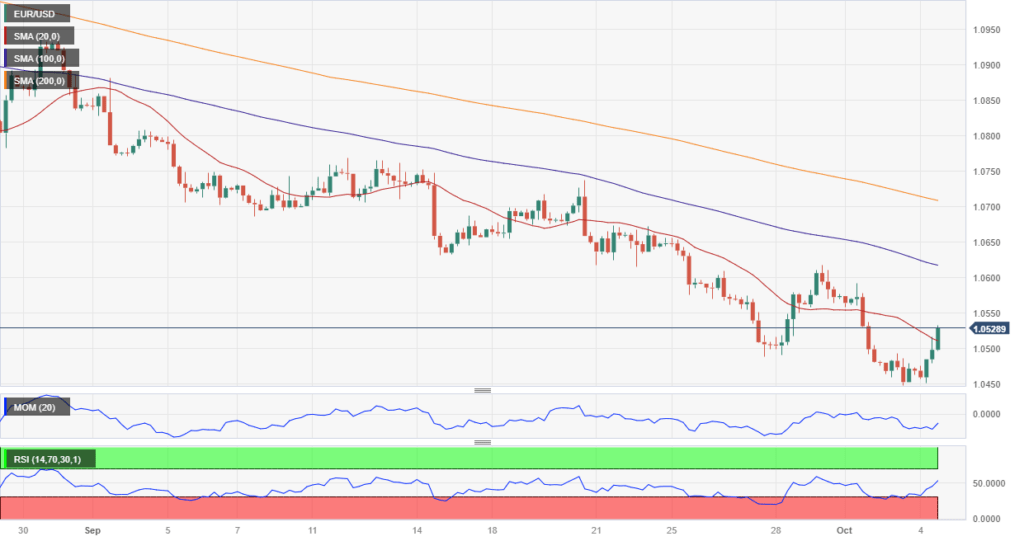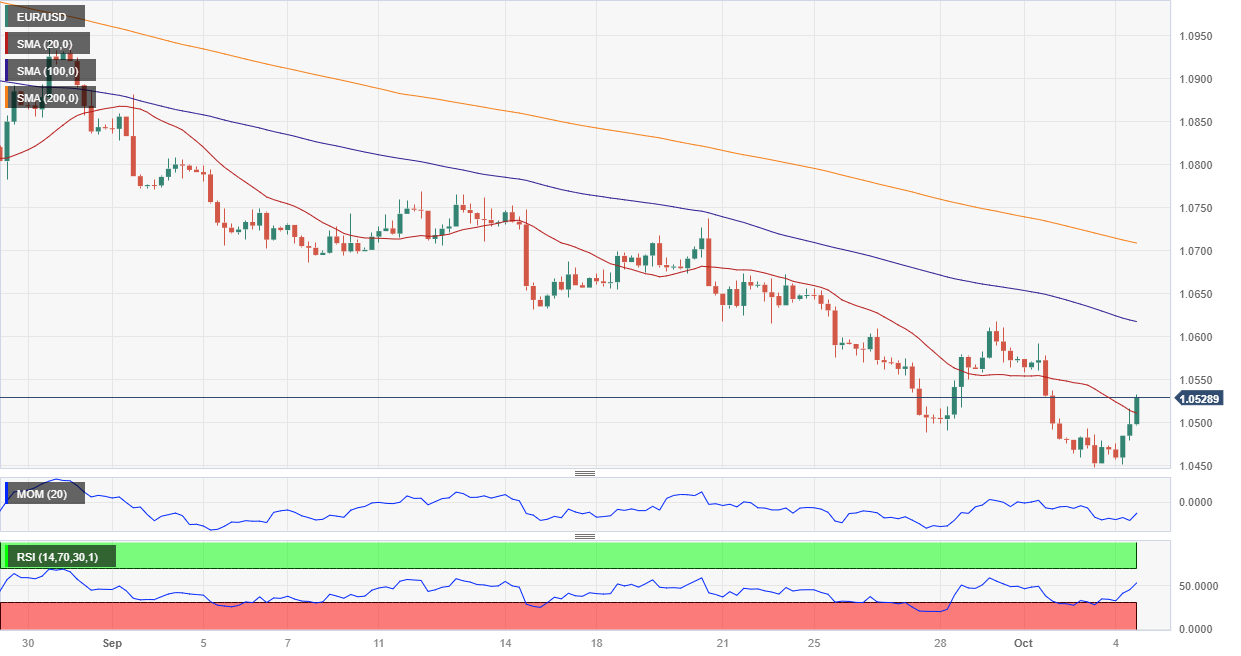The EUR/USD pair climbed back above the 1.0500 level early on Wednesday and maintained its gains as Wall Street’s opening approached. The US Dollar lost some ground in the first half of the day due to overbought conditions and as investors awaited important economic data from the United States.
S&P Global released the final September Services and Composite PMI figures, which brought some positive surprises. The German services index was revised higher to 50.3, slightly better than the previously reported 49.8. However, it’s worth noting that this increase in activity was modest and largely driven by clearing backlogs of work. The final Euro Zone Services PMI remained at 48.7, and the Composite PMI stood at 47.2. Additionally, the EU reported a decline in August Retail Sales, which dropped by 1.2% month-on-month and 2.1% year-on-year, worse than expected. Finally, the Producer Price Index (PPI) for August increased by 0.6%, in line with market expectations.
In the US, the September ADP Employment Change survey revealed that the private sector added only 89,000 new jobs during the month. Later in the day, S&P Global will release the final US September Services and Composite PMIs, and the official ISM Services index for the same month will be published. Additionally, the economic calendar includes August Factory Orders data and a speech by European Central Bank (ECB) President Christine Lagarde.
Short-Term Technical Analysis for EUR/USD

The EUR/USD is currently trading near 1.0520, having recovered most of its losses for the week. However, from a technical perspective as observed in the daily chart, this upward movement appears to be a corrective one. Key indicators are on the rise but remain in negative territory, indicating that the oversold condition is easing. It’s important to note that the pair is significantly below the bearish 20 Simple Moving Average (SMA), which acts as a dynamic resistance level around 1.0630. Additionally, the longer-term moving averages are gradually trending lower, well above the shorter-term one.
Turning to the 4-hour chart, the EUR/USD has moved above the mildly bearish 20 SMA, although it remains below the longer-term SMAs. This supports the notion of a continued upward correction. The Momentum indicator has shown a strong recovery from extremely oversold levels but is still below its 100 line. The Relative Strength Index (RSI) has re-entered positive territory, currently advancing at approximately 52.
Key Support Levels: 1.0485, 1.0450, 1.0410Key Resistance Levels: 1.0540, 1.0590, 1.0630

